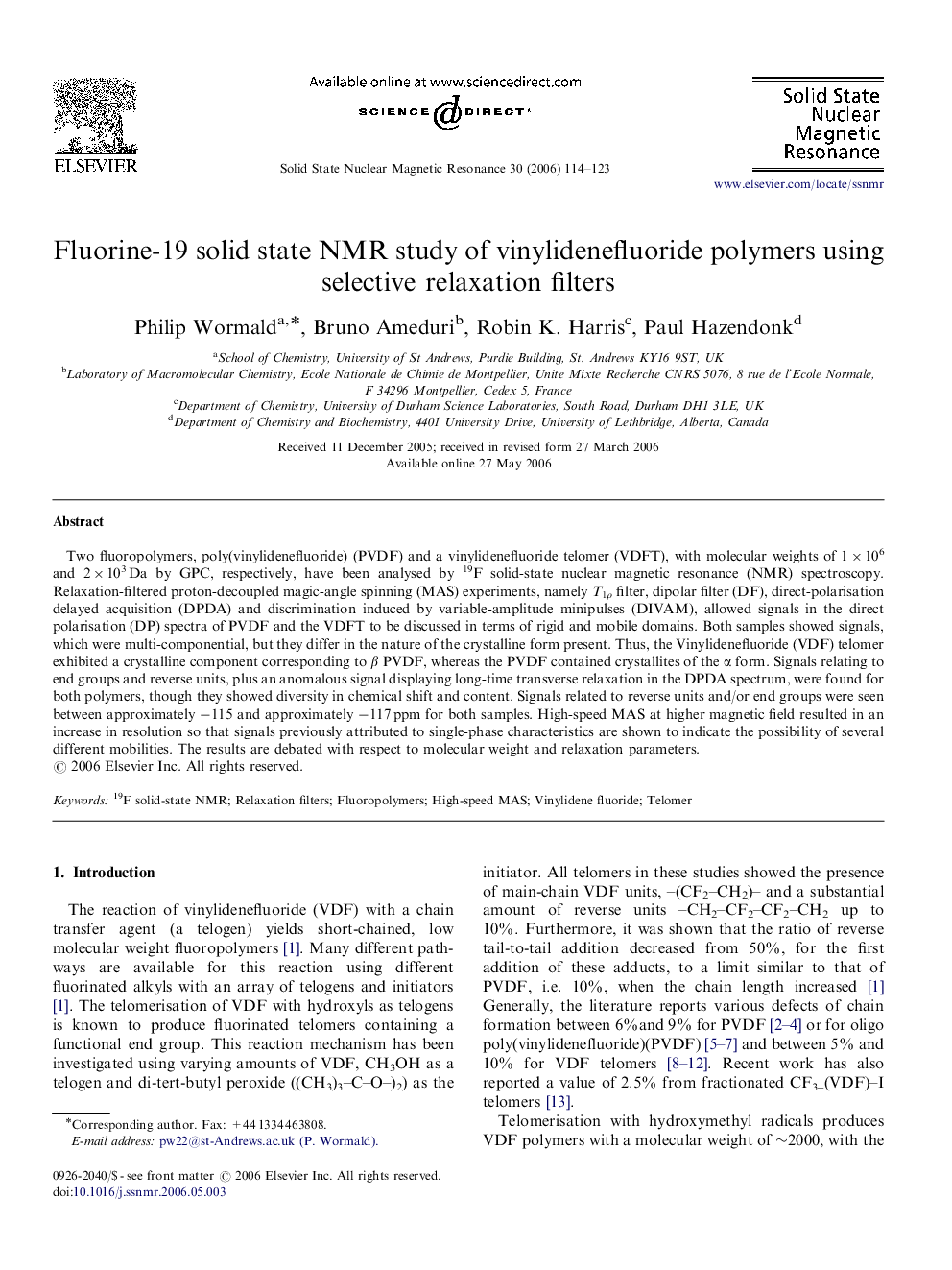| Article ID | Journal | Published Year | Pages | File Type |
|---|---|---|---|---|
| 5420946 | Solid State Nuclear Magnetic Resonance | 2006 | 10 Pages |
Two fluoropolymers, poly(vinylidenefluoride) (PVDF) and a vinylidenefluoride telomer (VDFT), with molecular weights of 1Ã106 and 2Ã103 Da by GPC, respectively, have been analysed by 19F solid-state nuclear magnetic resonance (NMR) spectroscopy. Relaxation-filtered proton-decoupled magic-angle spinning (MAS) experiments, namely T1Ï filter, dipolar filter (DF), direct-polarisation delayed acquisition (DPDA) and discrimination induced by variable-amplitude minipulses (DIVAM), allowed signals in the direct polarisation (DP) spectra of PVDF and the VDFT to be discussed in terms of rigid and mobile domains. Both samples showed signals, which were multi-componential, but they differ in the nature of the crystalline form present. Thus, the Vinylidenefluoride (VDF) telomer exhibited a crystalline component corresponding to β PVDF, whereas the PVDF contained crystallites of the α form. Signals relating to end groups and reverse units, plus an anomalous signal displaying long-time transverse relaxation in the DPDA spectrum, were found for both polymers, though they showed diversity in chemical shift and content. Signals related to reverse units and/or end groups were seen between approximately â115 and approximately â117 ppm for both samples. High-speed MAS at higher magnetic field resulted in an increase in resolution so that signals previously attributed to single-phase characteristics are shown to indicate the possibility of several different mobilities. The results are debated with respect to molecular weight and relaxation parameters.
